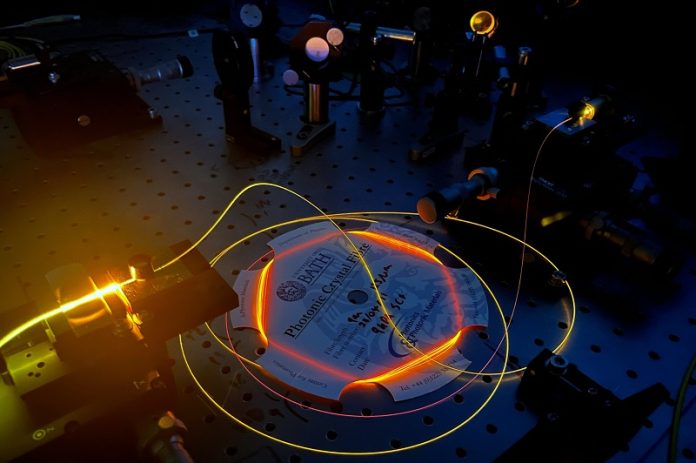
A team of physicists at the University of Bath in the UK has developed a new type of optical fiber that could revolutionize data transfer in the age of quantum computing.
These special fibers are designed to handle the unique demands of quantum technology, which promises incredible computational power, new medicines, and unbreakable cryptographic techniques for secure communications.
Quantum computers work differently from today’s computers, using particles of light called photons.
However, the current optical fibers used to transmit data around the world are not ideal for quantum communication because they have solid cores.
The new fibers from Bath feature a micro-structured core with air pockets running along their entire length.
Dr. Kristina Rusimova from the University of Bath explains, “Traditional optical fibers work well for our current telecommunications but not for quantum technologies, which require different wavelengths.”
The Bath team, led by Dr. Rusimova, detailed their innovative fibers and other developments in a paper published in Applied Physics Letters Quantum.
Dr. Rusimova and her colleagues are pioneering optical-fiber design and fabrication, laying the groundwork for tomorrow’s data transmission needs.
The fibers they are developing are crucial for the future quantum internet, which will rely on these new types of fibers to transfer information between nodes, much like our current internet.
Light is a promising medium for quantum computation because photons have unique properties. One of these is quantum entanglement, where two photons, even when separated by great distances, can instantly affect each other’s properties.
Unlike the binary bits of classical computers, which are either a one or a zero, entangled photons can exist as both at the same time, providing immense computational power.
Dr. Cameron McGarry, formerly at Bath and the first author of the paper, emphasized, “A quantum internet is essential for realizing the potential of quantum technology. This will require optical fibers different from those we use now and new supporting technologies.”
The Bath team discusses the challenges of creating a quantum internet and potential solutions for building a robust, scalable network. This includes fibers for long-distance communication and special fibers for quantum repeaters, which extend the distance the technology can operate.
These specialty optical fibers can also do more than just connect network nodes. They can help implement quantum computing at the nodes by acting as sources of entangled photons, changing the color of photons, or even trapping individual atoms inside the fibers.
Dr. McGarry said, “Unlike standard telecom fibers, our specialty fibers with micro-structured cores allow us to manipulate light in various ways, creating entangled photons and other quantum states.”
Dr. Kerrianne Harrington, a postdoctoral researcher, highlighted the rapid advancements in microstructured optical fibers and their interest to industry. Dr. Alex Davis added, “These fibers’ ability to tightly confine and transport light makes them useful for generating exotic quantum states of light, with applications in quantum computing, precision sensing, and secure communication.”
The Bath team’s work is expected to help lay the foundations for future quantum computers, bringing us closer to achieving quantum advantage—the ability of a quantum device to perform tasks more efficiently than conventional computers.



